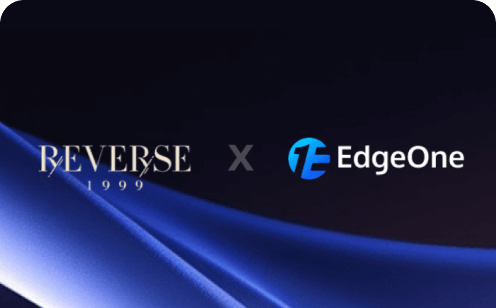Web Security Issues and Solutions: Protecting Your Digital Assets

In the digital age, where the internet has become an integral part of our daily lives, web security has emerged as a critical concern for individuals, businesses, and organizations worldwide. Web applications store vast amounts of sensitive data, from personal information to financial records, making them prime targets for cyberattacks. This article aims to explore the prevalent web security issues that threaten the integrity and safety of online platforms and provide comprehensive solutions to mitigate these risks. By understanding the vulnerabilities and implementing robust security measures, we can safeguard the digital realm and ensure a safer online experience for all users.
Common Web Security Vulnerabilities
1. Injection Attacks
Injection vulnerabilities remain among the most dangerous web application flaws, consistently ranking high in the OWASP Top 10.
- SQL Injection occurs when malicious SQL statements are inserted into entry fields, allowing attackers to manipulate databases. For instance, a simple input like
'OR1=1--in a login form could bypass authentication entirely. The impact can be devastating, potentially exposing, modifying, or deleting sensitive data or even gaining complete server access. - Command Injection allows attackers to execute system commands through vulnerable applications. Consider a web application that uses user input to execute a command like
ping[user-supplied-address]. Without proper validation, an attacker could input;rm -rf /to execute destructive commands. - XML/LDAP Injection targets parsing vulnerabilities in respective systems, potentially resulting in data disclosure or manipulation, authentication bypass, or denial of service attacks.
2. Cross-Site Scripting (XSS)
XSS vulnerabilities exist when applications include untrusted data in web pages without proper validation or escaping. These attacks come in several forms:
- Stored XSS involves malicious scripts being permanently stored on target servers (in databases, comments, forums, etc.). Every user viewing the affected page receives and executes the malicious script.
- Reflected XSS occurs when malicious scripts are reflected off a web application to the victim's browser, typically through URLs, and execute when clicked.
- DOM-based XSS exploits vulnerabilities in client-side JavaScript, manipulating the Document Object Model to execute malicious code within the user's browser.
The consequences of successful XSS attacks include session hijacking, credential theft, and malware distribution.
3. Cross-Site Request Forgery (CSRF)
CSRF attacks force authenticated users to execute unwanted actions on web applications where they're currently authenticated. This occurs when attackers craft malicious requests that leverage the victim's active session.
For example, a victim authenticated to their banking portal could visit a malicious website containing code that automatically submits a form to transfer funds. Since the browser sends cookies with every request, the banking application processes this as a legitimate transaction.
High-profile CSRF attacks have affected platforms like YouTube and Netflix in the past, demonstrating their serious potential impact.
4. Broken Authentication and Session Management
Authentication vulnerabilities represent a significant risk to web applications. Common issues include:
- Weak credential problems such as default, weak, or well-known passwords that can be easily guessed or brute-forced.
- Session hijacking techniques where attackers steal or predict session identifiers to impersonate users, often exploiting insecure session storage or transmission.
- Multi-factor authentication bypasses through techniques like SIM swapping, social engineering, or exploiting implementation flaws in recovery mechanisms.
5. Security Misconfigurations
Security misconfigurations are among the most common and exploitable vulnerabilities, resulting from:
- Default settings risks, where applications, frameworks, servers, or platforms are deployed with default configurations that may not be secure.
- Unnecessary open services that increase the attack surface, such as unused ports, services, pages, accounts, or privileges.
- Verbose error messages that reveal sensitive information about the application stack, database structure, or internal workings.
6. Sensitive Data Exposure
Inadequate protection of sensitive data remains a critical issue:
- Insufficient encryption practices for data in transit or at rest, including weak algorithms, inappropriate key management, or lack of encryption altogether.
- Man-in-the-middle attacks intercept unencrypted or weakly encrypted data between clients and servers.
- Data leakage through APIs where excessive information is revealed through API responses, error messages, or metadata.
7. Broken Access Control
Access control vulnerabilities allow attackers to act outside their intended permissions:
- Privilege escalation vulnerabilities enable users to gain unauthorized access to functionality or data meant for higher-privileged users.
- Insecure direct object references expose internal implementation objects without access controls, allowing manipulation of reference pointers.
- Missing authorization checks at the function or API level leave critical operations vulnerable to unauthorized access.
8. Emerging Threats
The security landscape continuously evolves with new challenges:
- API security challenges as organizations increasingly rely on APIs for core functionality while sometimes neglecting proper authentication, rate limiting, and input validation.
- Microservice architecture vulnerabilities that introduce complex inter-service communications, expanding attack surfaces and complicating security monitoring.
- Supply chain attacks targeting third-party dependencies, as demonstrated by incidents like the SolarWinds breach and exploitation of open-source libraries.
Security Solutions and Best Practices
1. Secure Development Lifecycle
Effective security begins at the planning phase with:
- Security requirements gathering that identifies protection needs for data assets and functionality before development starts.
- Threat modeling techniques to systematically identify, quantify, and address security risks throughout the development process.
- Secure coding standards that establish guidelines for developers to follow, addressing common vulnerability patterns and promoting secure practices.
2. Input Validation and Sanitization
Proper input handling is fundamental to web security:
- Client-side vs. server-side validation should be implemented with the understanding that client-side validation improves user experience, but server-side validation is essential for security.
- Encoding and escaping strategies ensure that user input is treated as data rather than executable content in different contexts (HTML, JavaScript, SQL, etc.).
- Parameterized queries and prepared statements separate SQL code from data, preventing injection attacks by having the database distinguish between code and user-supplied data.
3. Authentication and Authorization
Robust identity and access management includes:
- Multi-factor authentication implementation requiring two or more verification factors: something you know (password), something you have (token), or something you are (biometric).
- OAuth 2.0 and OpenID Connect for secure delegation of authentication and authorization in modern web applications and APIs.
- JWT security considerations include proper signing, validation, expiration policies, and secure storage to prevent token-based attacks.
4. Encryption and Data Protection
Data protection requires comprehensive encryption strategies:
- TLS/SSL best practices include proper certificate management, secure protocol versions, strong cipher suites, and perfect forward secrecy.
- Data encryption at rest for sensitive information stored in databases, file systems, or backups using strong, industry-standard algorithms.
- Key management strategies addressing secure generation, storage, rotation, and revocation of encryption keys.
5. Security Headers and Configurations
HTTP security headers provide an additional security layer:
- Content Security Policy (CSP) to mitigate XSS attacks by specifying which dynamic resources are allowed to load.
- HTTP Strict Transport Security (HSTS) forces browsers to use secure HTTPS connections only.
- Cookie security attributes include HttpOnly, Secure, and SameSite flags to protect against various cookie-based attacks.
6. Security Testing
Comprehensive testing strategies include:
- Static and dynamic application security testing (SAST and DAST) to identify vulnerabilities through code analysis and runtime testing.
- Penetration testing methodologies simulating real-world attacks to identify vulnerabilities missed by automated tools.
- Bug bounty programs leverage the broader security community to discover and responsibly disclose vulnerabilities.
7. Monitoring and Incident Response
Operational security requires ongoing vigilance:
- Security logging best practices capture relevant events with sufficient context while protecting log data from tampering.
- Intrusion detection systems to identify suspicious patterns and potential security incidents in real-time.
- Creating effective incident response plans with clearly defined roles, communication channels, and procedures for different types of security incidents.
8. Implementing DevSecOps
Modern security approaches integrate security into development:
- Integrating security into CI/CD pipelines allows for automated security testing at every code commit and build, ensuring vulnerabilities are caught early in the development cycle.
- Automated security testing tools, including dependency scanners, SAST, DAST, and container security scanners, provide continuous assessment of application security.
- Security as code principles treat security configurations, policies, and controls as code, allowing them to be versioned, tested, and deployed alongside application code.
9. Regulatory Compliance and Standards
Organizations must navigate complex compliance landscapes:
- The OWASP Top 10 alignment provides a foundation for addressing the most critical web application security risks identified by industry experts.
- Industry-specific compliance requirements such as PCI DSS for payment processing, HIPAA for healthcare data, and GDPR for personal data protection impose additional security obligations.
- International security standards like ISO 27001 provide frameworks for comprehensive information security management systems.
Future of Web Security
The security landscape continues to evolve with:
- AI and machine learning in security, both as defensive tools for pattern recognition and threat detection and as potential attack vectors.
- Zero-trust architecture principles replace traditional perimeter-based security with continuous verification regardless of location or network.
- Passwordless authentication trends are moving toward biometrics, hardware tokens, and cryptographic credentials to eliminate password-related vulnerabilities.
Conclusion
Web security issues pose significant risks to the integrity and safety of web applications and user data. By understanding the common vulnerabilities, such as SQL injection, cross-site scripting, and data breaches, and implementing robust solutions, including secure coding practices, strong authentication mechanisms, and advanced security technologies, organizations can significantly enhance their web security posture. Adhering to best practices, such as regular updates, employee training, incident response planning, and continuous monitoring, is essential for maintaining a secure digital environment. In an ever-evolving threat landscape, vigilance and proactive measures are key to safeguarding the digital realm and ensuring a safer online experience for all users.
EdgeOne offers comprehensive web security advantages by integrating advanced security features with edge computing capabilities. It provides robust Web Protection and DDoS Protection, effectively mitigating large-scale traffic attacks to ensure service availability. The built-in Web Application Firewall (WAF) defends against common web threats like SQL injection, XSS, and CSRF, safeguarding web applications from malicious requests. Additionally, EdgeOne's intelligent traffic scheduling and edge caching mechanisms optimize content delivery while reducing latency, ensuring a seamless user experience. By combining security and acceleration in a single platform, EdgeOne simplifies management and enhances overall network resilience.
Sign up to begin your journey with us!

